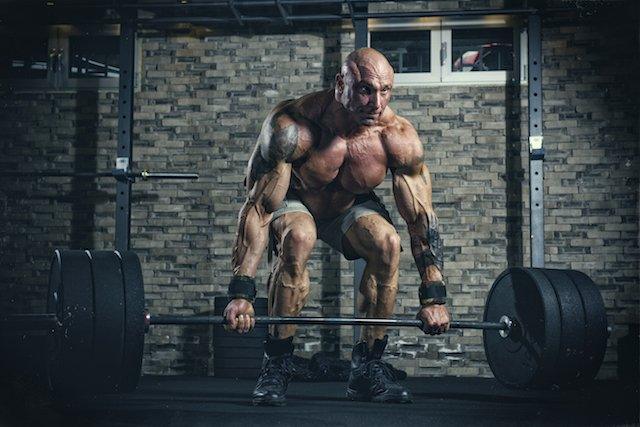

Rock Solid: Best Way to Build Muscle
Table of Contents
Rock Solid: Build Muscle Strength, Not Muscle Endurance
by: Robbie Durand
Improvements in muscle strength have been explained by changes greater motor unit recruitment (muscle fibers recruited). This means that as heavier weights are lifted, more muscle fibers are called into action to lift the weight. Think of a tug of war of several skinny men against one large man; all the skinny men need to move together to exert the greatest amount of force against the large man. You’re muscle fibers function along these same principles, if you want to exert the most significant amount of power, more and more muscle fibers are recruited in the muscle. It makes sense that if you are lifting a weight, a muscle fiber needs to have maximal recruitment to become stronger. If you look at how Olympic lifters train, they train explosively with reps usually less than five repetitions, as they try to move the bar as fast as possible. It has been well documented that increasing muscle force results in higher muscle activity because of the greater motor unit recruitment necessary to increase contractile force.
Accordingly, numerous studies have found that muscle EMG activity increases during dynamic exercises such as squats or deadlifts as the extent of the effort, or the number of repetitions performed increases.

The latest fad in fitness magazines is the “100-rep workout” to shock muscles into new growth. Proponents of training to failure with lite weights is that maximally recruit high threshold muscle fibers without the use of heavy loads. The theory is that when muscles begin to fatigue progressively throughout a set, more motor units will be recruited to build muscle. It’s sounds cool in theory, but according to the newest research published in the Journal of Strength and Conditioning Research, there is nothing better for muscle activation and recruitment than heavy weights. If you look at the bodybuilders with the greatest muscle mass, such as Ronnie Coleman and Dorian Yates, they all trained heavy!! Researchers wanted to examine what activated muscle better training to failure with a lighter weight or heavy lifting.
This investigation examined peak motor unit activity during sets, which differed in resistance (50, 70, or 90% 1-Repetition Maximum (1RM)). Ten resistance-trained men were assessed by electromyography (EMG) on the leg muscles (vastus lateralis and vastus medialis muscles). EMG measures the muscle activation of the muscle while contracting.
Overall, the maximal repetition sets to failure at 50% and 70% 1RM resulted in higher peak EMG amplitude than during submaximal repetition sets with the same resistance. However, peak EMG amplitude was significantly greater in the maximal 90% 1RM set than all other sets performed. The results of this investigation indicate that using higher external resistance is a more effective means of increasing motor unit activity than increasing the number of repetitions carried out with lighter weights even when the end point is muscular failure.Accordingly, previous recommendations for the use of heavier loads during resistance training programs to stimulate the maximal development of strength and hypertrophy are further supported. Additionally, the author commented that “perceptual feelings about a workout may be misconstrued as similar when the amount of activated tissue differs substantially.” This means that although using a lite weight may feel exerting, you are not getting the same muscle activation as when using heavy weights. Ultimately, it may not be possible to reach maximal motor unit activity with light resistance exercise even if the set is performed to failure.
The study did not measure muscle growth, but assuming that muscle growth is dependent on the greatest amount of muscle activation that occurs during a set, then it would seem logical that heavy lifting is doing to be superior for muscle growth compared to light weight high repetition lifting. Many people are looking for the next new workout to increase muscle growth, but it may be as simple as adding more weight to the bar.

















